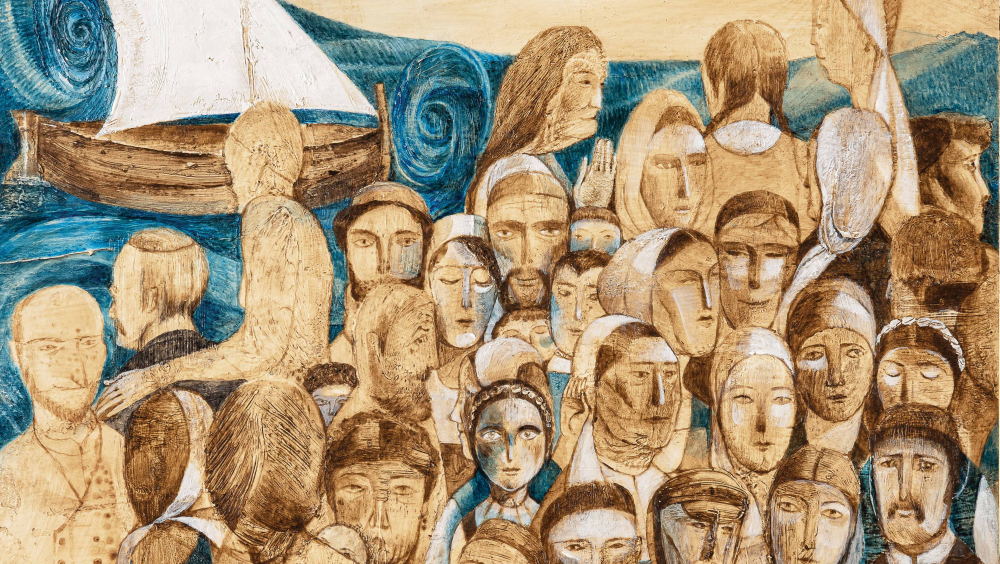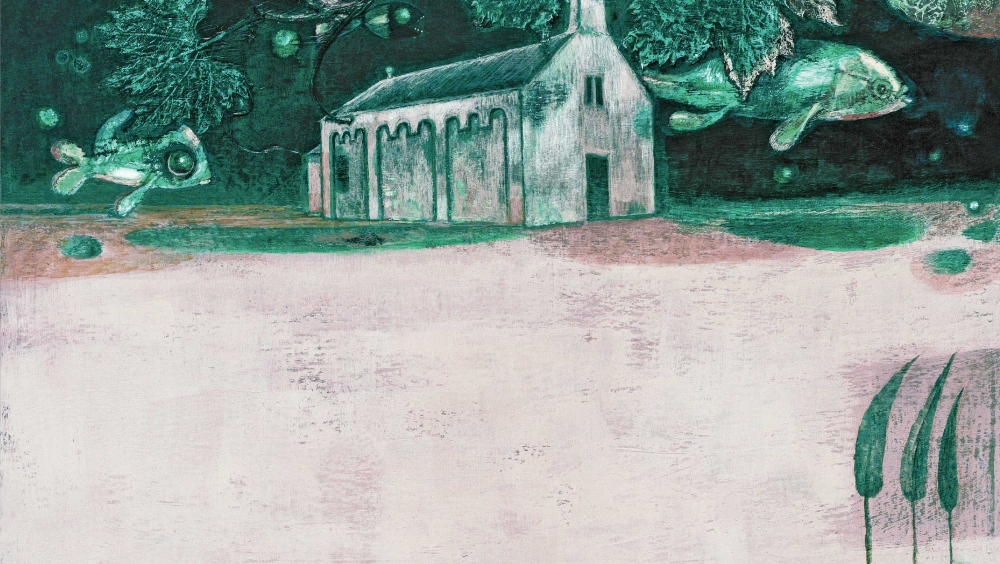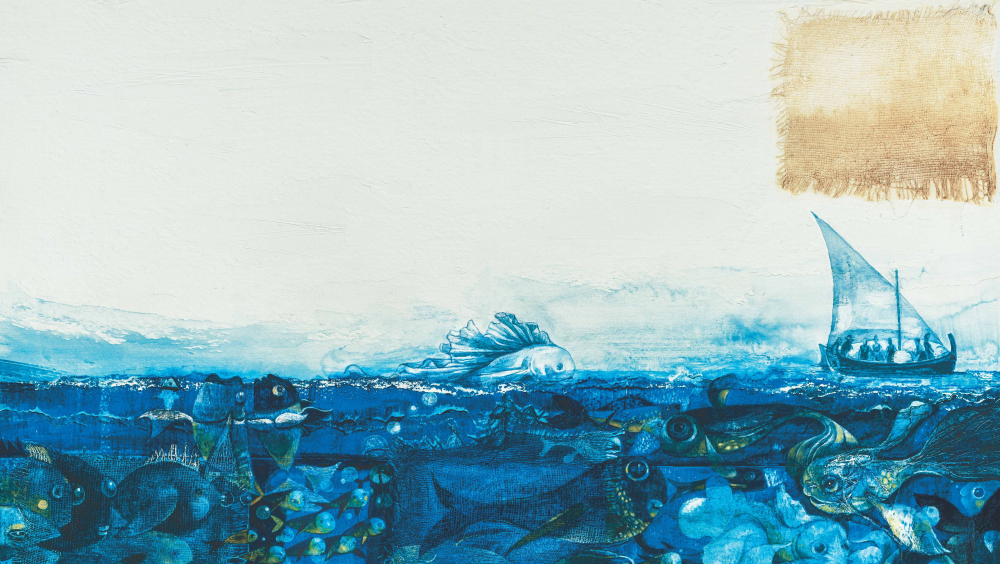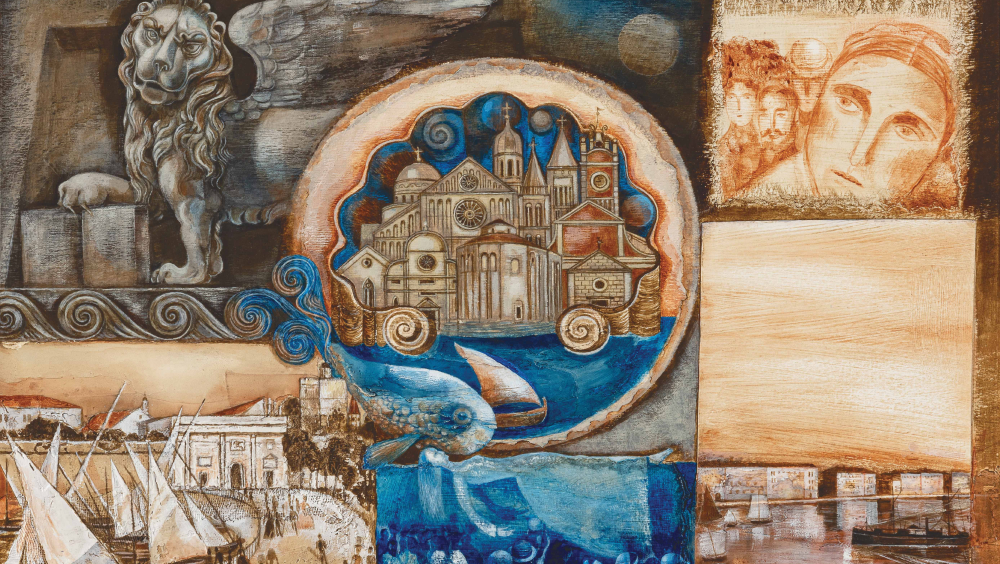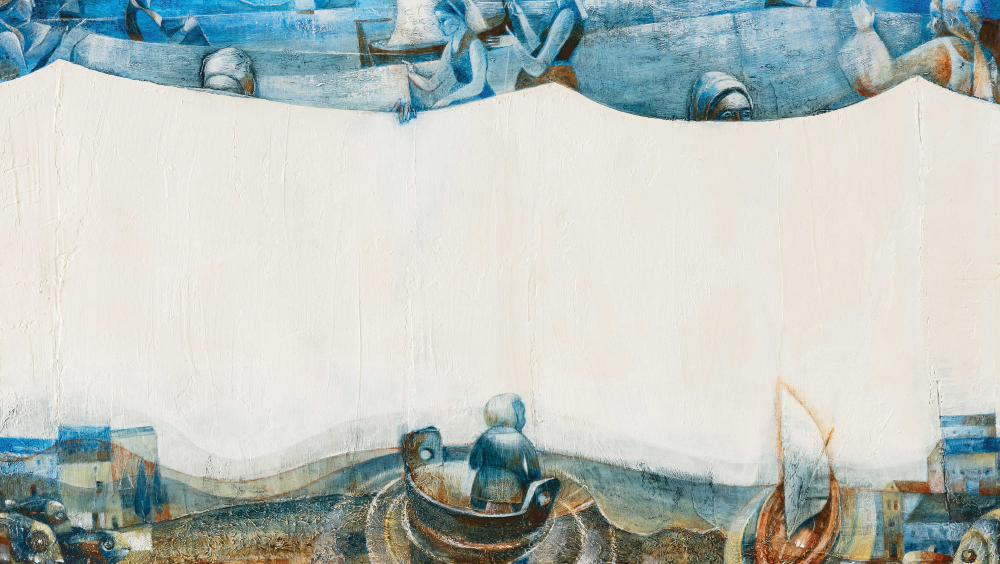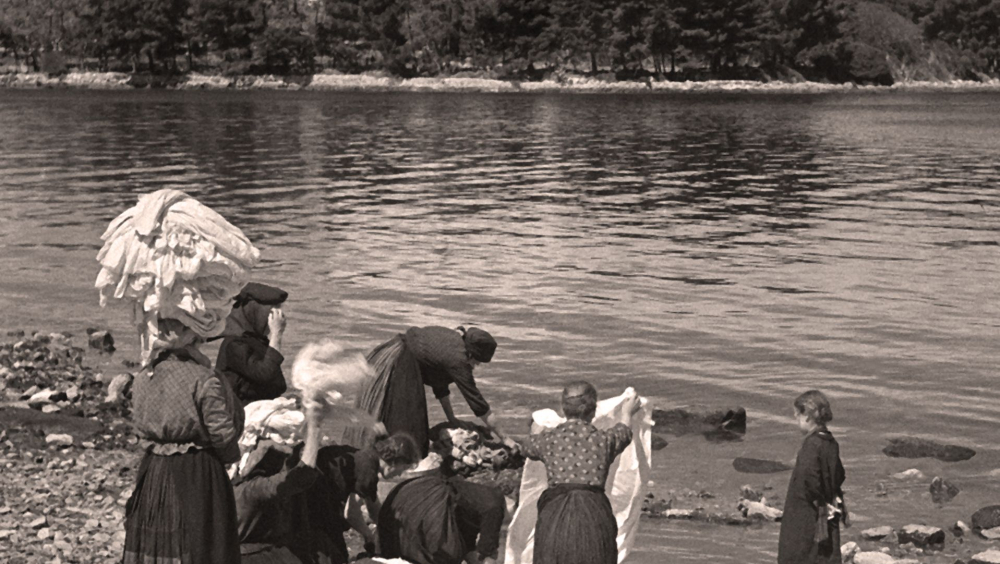The Little White Laundresses Fishes
The project The Little White Laundress Fishes is inspired by the laundresses from the village Preko on the island of Ugljan, Croatia. The central object of the project is the picture-book of the same name, created with desire to present to young generations the cultural and traditional heritage of Ugljan, and the tragic event in which, during a storm at the sea in 1891, the 16 laundresses lost their lives. The visually rich illustrations and the story are followed by the Preko Time machine where the lifestyle, work and survival in Peko, Ugljan and town Zadar are described in detail, in both local and European context, as well as the lesser-known terms from the local dialect.
Accepting the idea that real life can be modified in fairy tales and that in most situations we can find a piece of truth the author Manuela Vladić-Maštruko has imagined and realized the story and the illustrations as a synergy of historical facts, traditional costumes and local dialect with artistic imagination. Elements of wonder are exchanged with conditions and depictions of ordinary life, and the tension between the backbone and the creation is resolved in fairy-tale epilogue; the life of the drowning women does not end in the sea, but on the contrary, the women gain a new life by being transformed into white fishes – a sort of healing fairies from the sea. Having found a new existence in the sea, they become protectors of the sea world, the village Preko, and the islet Galevac; their mission is to protect the sea from the fatal effects of modern life, and even from being forgotten, because as long as we remember and feel, we live.
The projects has a lot of accompanying activities with active collaboration on multiple levels and focus on cultural diversity.
The cultural heritage of islands tells us about the lastingness of men on island, their diligence, struggle, ingenuity, defiance of adversity and misfortune in the sea environment. The sea generously rewards the islander, but it also brings limitations and scarcity. All these conditions have shaped the lifestyle, work, survival and cultural customs on the island. The way of doing laundry has incorporated itself in the cultural and traditional heritage of the island of Ugljan. It was done by the laundresses from Preko. They have been doing it since ancient times, notably in the period between two-word wars. Many wealthy families lived in town Zadar, which throughout history was under different rules (from Italian to Austro-Hungarian), and demanded all kinds of services from the locals. Doing laundry was painstaking and poorly paid job which the island woman, in addition to all work in the house and in the field, tried to get a few extra coins for the family. The laundresses traveled by boat- gajeta to get the laundry from wealthy families. The boat docked in the city port in the early morning. The laundresses would scatter around the city, collect laundry from door to door in wicker baskets and linen bundles. Sometimes they immediately carried the laundry onto the boat, and sometimes they collected it in a basement in the city centre, and when they got through all the houses, they carried full baskets and bundles on their heads onto the boat. The laundresses would arrive in Preko in the afternoon and bring the laundry to their homes. Then, the laundry was sorted according to the degree of dirtiness and stacked in large wooden buckets: the dirtiest laundry was placed on the bottom of the bucket and the least dirty laundry was placed on top. A white cloth was put on top, as a protection against lye (a detergent made of wood ash from the stove), and on top of that a lužnica - bleached jute cloth from a sack. The laundry was first soaked in cold water (it should be noted that the water on the island was scarce, locals collected rainwater or water from a wellspring) for a few hours, and when the cold water was drained, lye and hot water would be added on top of the white cloth. Coloured laundry was washed immediately afterwards, while white laundry was soaked until midnight. During the soaking, laundresses rested for a few hours. After midnight, they would start washing the laundry. It was done over a washing board that the laundresses, bent over the bucket, supported with their bodies. They washed until morning, and the soap ruthlessly rippled their skin, creating sores on their hands. Before dawn, the laundry was washed and drained and had to be carried to the wellspring for rinsing. The women would refresh themselves with a simple breakfast consisting of grain coffee with a drop of schnapps and bread dipped in it. After rinsing, in the summer, the laundry was rubbed on the beach, and in the winter, it was rubbed and dried on stone walls and trees. The laundresses were not literate, so to mark the ownership of individual laundry, they developed a system of marking with tucked edges and crosses. The laundry was brought to the ladies in the city on the same morning. The laundresses depended on the weather conditions, not only for washing and drying the laundry, but also for sailing. It was often necessary to travel in windy weather. On November 2, 1891, a strong southern wind overturned the gajeta, and 16 laundresses from Preko drowned. This painful tragedy has etched into the minds of the people of Preko, who cherish the memory of this unfortunate event with great piety. The picture-book was realized as mobile memorabilia of time and people to be remembered and as a tribute to the survival of the island man.
Being touched and inspired with this true story I have written and illustrated a modern fairy tale with fictional characters. The main character of this tale is a girl named Stošica who is at a crossroads between childhood and girlhood when young girls on the island are given assignments which slowly introduce them into the world of adult, married women. Other than doing housework and other family-related work which she conducts on a daily basis, the fourteen-year-old Stošica is slowly acquiring skills necessary for providing laundry service – she is becoming a laundress; by following her mother and the other laundresses to Zadar, she discovers a whole new world. The rich city scenery, the scenes from its everyday life and actors completely win Stošica over, and she soon finds a friend. The friend, Jelena, is the daughter of an aristocratic family from Zadar, and although seemingly completely different from Stošica, the girls become extremely close upon their very first encounter, despite all the prejudices and cultural differences. However, due to Jelena’s sudden illness the girls drift apart, and the newly found sisters will only meet again under the sea, in another world and in another dimension.
The visual and narrative enactments are swirling in realistic and imaginary scenes of real, everyday life and Stošica’s imagination which helps her to overcome obstacles and understand and accept the life and world around her. The arduous action of doing laundry, manual work, traveling by boat, family and religious life are filed with descriptive facts in this tale, both visually and textually. However, the narration develops gradually, as the scene progresses, it focuses on the echoes of facts and their metaphysical meaning in both present and the future.
Considering that life on island today differs in many ways from the time when laundresses lived, and the benefits of modern lifestyle are endangering not only the cultural heritage but also the natural heritage, picture book carries an ecological massage that is not directly indicated, but is expressed through a symbolic accumulation of events, words and images because fairy tales always contain more experience than any of their interpretations.
A lot of island cultures in Mediterranean Sea have been traditionally affiliated socio-political with mainland European cultures. The story that we want to tell talks simultaneously about different cultures, both in wider European and local contexts – it talks about the link between different cultures of town Zadar (and its multicultural citizens) and country (and villages of Preko and islet of Galevac).
The link is the similarity of characters and the emotional world of the people is in focus of our interest. To be entirely oneself means to be able to touch someone else in their world, sympathize with him, be enriched by him, and uniquely express oneself. Irrespective of whether we deal with different cultures parallel to ours, or with layers of ours or culture close to ours, being friend is the best way to approach them and find common ground. A different culture is thus, in fact, only a different aspect of what we are, what we carry inside, and what we are becoming. The project aims an illustrated and written communication in a shape of picture book to youth and children with a lot of projects accompanying activities, in order to create empathy among Europeans and curiosity to visit and get to know each other, enriching our common ground.
The goals of project are to find suitable innovative ways of including the cultural heritage in school and extracurricular activities, fostering a culture of remembrance, preserving cultural identity and civic pride through heritage and art, stimulating interest in island culture and encouraging active and critical thinking in children and young adults through art. Approaching art through a picture book and exploring the cultural and historical heritage, they learn to ask questions, plan, engage in field work, teamwork and exploring, and artistic and literary expression.
